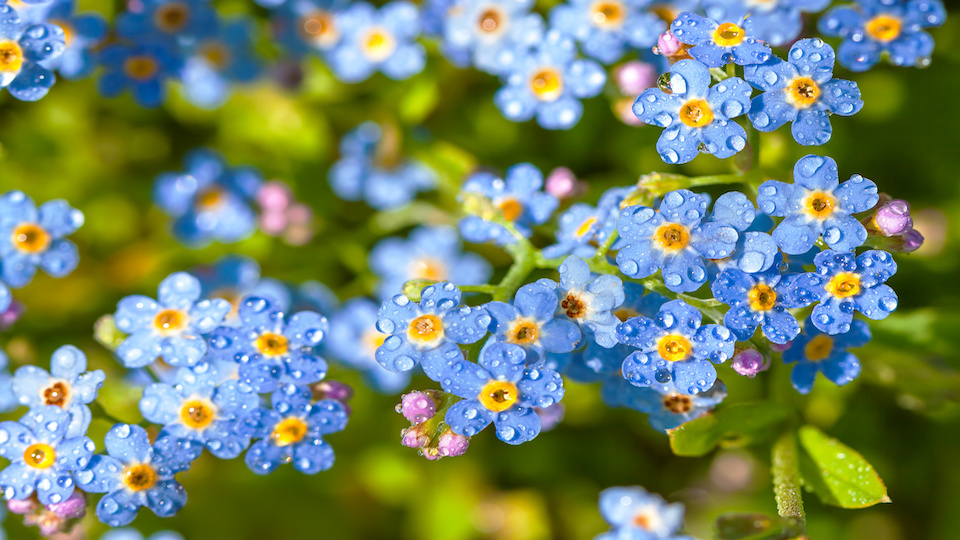We all love the bright colors and plentiful blooms of annuals. But let’s face it, they’re not exactly the most economical plants for your garden. Even if you save some money by buying annuals from seed, the cost over the years adds up, especially if you focus on annuals more than perennials. Fortunately, there is a way to ensure that you get your annual fix without having to break the bank in the process. Read on to find out about our favorite annuals that masquerade as perennials and come back every year.
What are self-sowing annuals?
If you live in a tropical climate such as Florida, you probably don’t even understand the concept of annuals. Without a winter freeze, your flowers stay pretty throughout the year and will often survive for a few seasons. For the rest of the country, especially those in the chilly, northern regions, annuals usually thrive for a few months at best. Gardeners in these environments or anyone who wants free plants should take advantage of the self-sowing annuals known as volunteers.
These plants come back year after year, not because they survive the winter like perennials, but because they spread their seeds as they die in the fall and grow again in the spring…without you having to plant a single seed.
Remember, only open-pollinated, and heirloom annuals will come back the same every year. Hybrid plants may change in color or variety.
Things to keep in mind
While volunteers are a great way to create a low-maintenance, low-cost flower garden, it is important to keep in mind that nature doesn’t always adhere to your carefully laid-out garden plans. You may end up having flowers where you didn’t necessarily want them. In this case, simply transplant the annuals in the spring or collect the seeds from the self-sowing annuals in the fall and plant them where you wish.
Stop deadheading blooms by the middle of August to give the late-season flowers plenty of time to go to seed. The blooms need to ripen, dry, and fall off naturally, so wait to clear out the dying annuals until late fall.
Best self-sowing annuals
Cosmos
There are hundreds of color combinations and varieties of cosmos, with colors ranging from the palest pink to a bright, vibrant red. This is a fantastic annual for a pollinator garden as bees and butterflies will be attracted to the delicate blooms.
Shasta Dasiy
An ambitious self-seeder, a single pack of daisy seeds, will often produce a variety of colors. Simply dig up any undesired plants that pop up in the spring and pot them as gifts for friends.
Portulaca
This is an excellent floral groundcover that will spread throughout the garden but is also easy to remove when needed. It grows close to the ground, yet, unlike other groundcovers, produces pretty little flowers to bring a burst of color to the dirt.
Pot marigold
Annuals are even better when they’re edible. Pot marigold can be enjoyed in salad and is often used in a variety of tinctures and healing salves. It has a light, delicate scent that makes it a popular plant for patios.
Forget-me-nots
You will be unable to forget about these persistent blue flowers. Though they seem fragile, the pretty blooms and tiny leaves will volunteer throughout your garden with vigor. Plant forget-me-nots in an empty area of the garden to quickly fill in the space. Though they are not invasive, don’t be afraid to pull out any unwanted plants. Don’t worry; more will grow back next year!
California Poppy
Wildflowers are an excellent addition to any garden, and the California poppy is no exception. Often mixed in with other wildflower seeds, this plant is equally lovely on its own, and its fluffy foliage will bring a balance to the harder edges of many perennial plants.
Purple Hyacinth Bean
It is called the purple hyacinth bean with good reason. This plant is purple all around and certainly lives up to its name. Though the beans are edible when cooked, it is usually grown as an ornamental due to its exciting color and self-sowing tendencies. Let some of the seed pods fall to the ground at the end of the season and collect the rest for easy planting elsewhere.
What self-sowing annuals do you love? Let us know in the comments below!
-Taylor Ramsey



